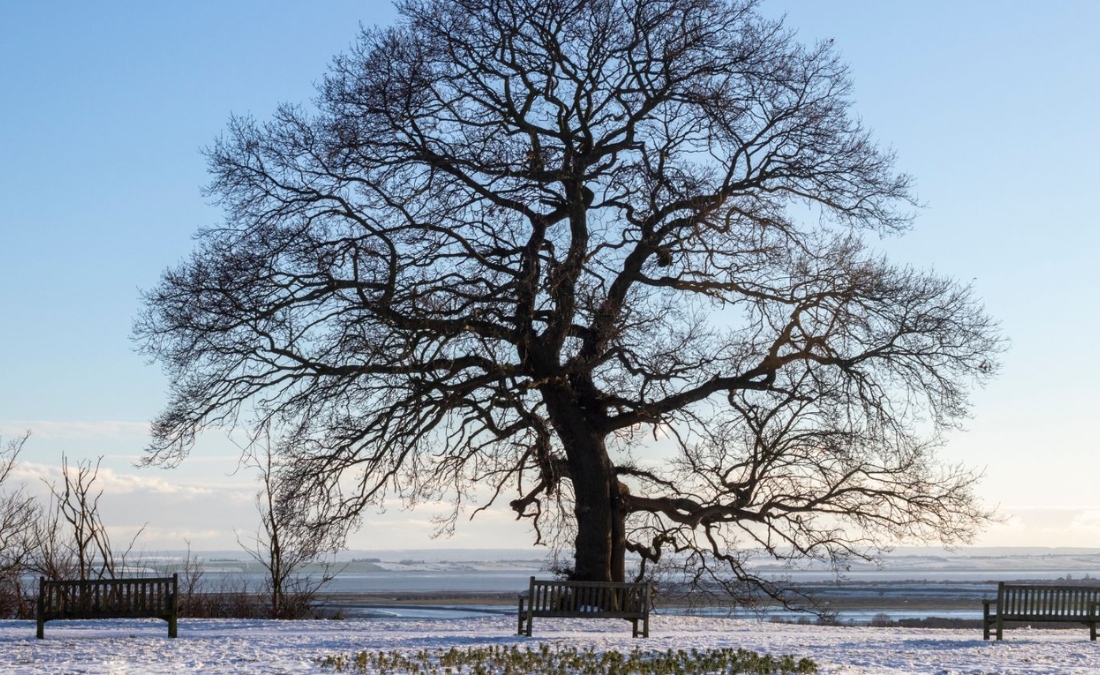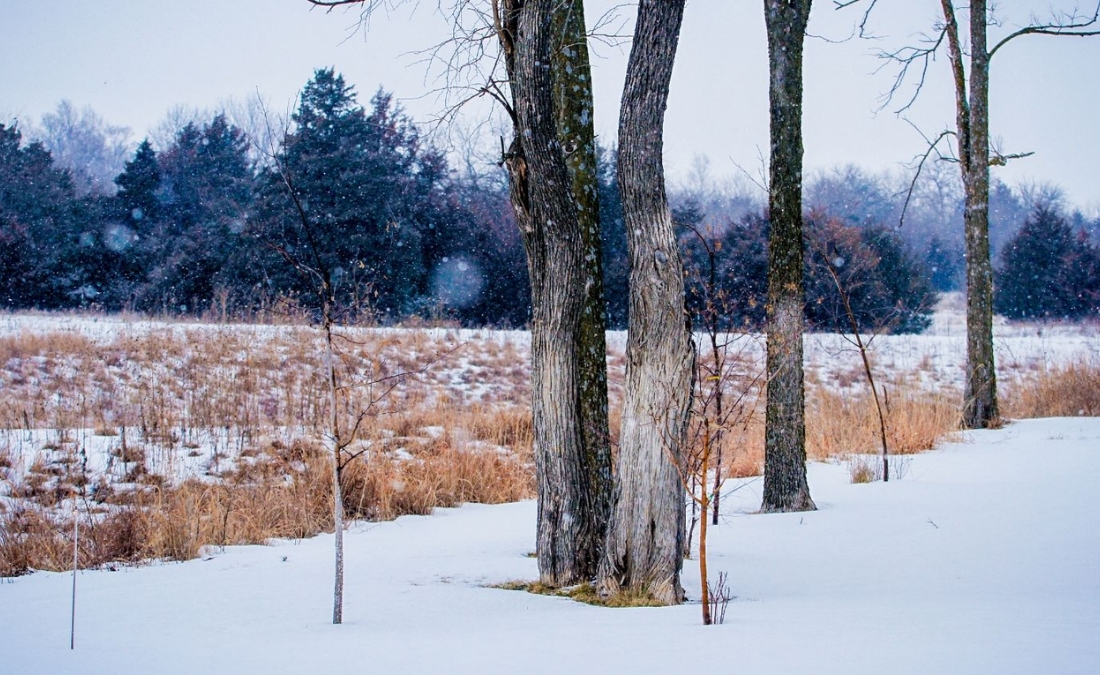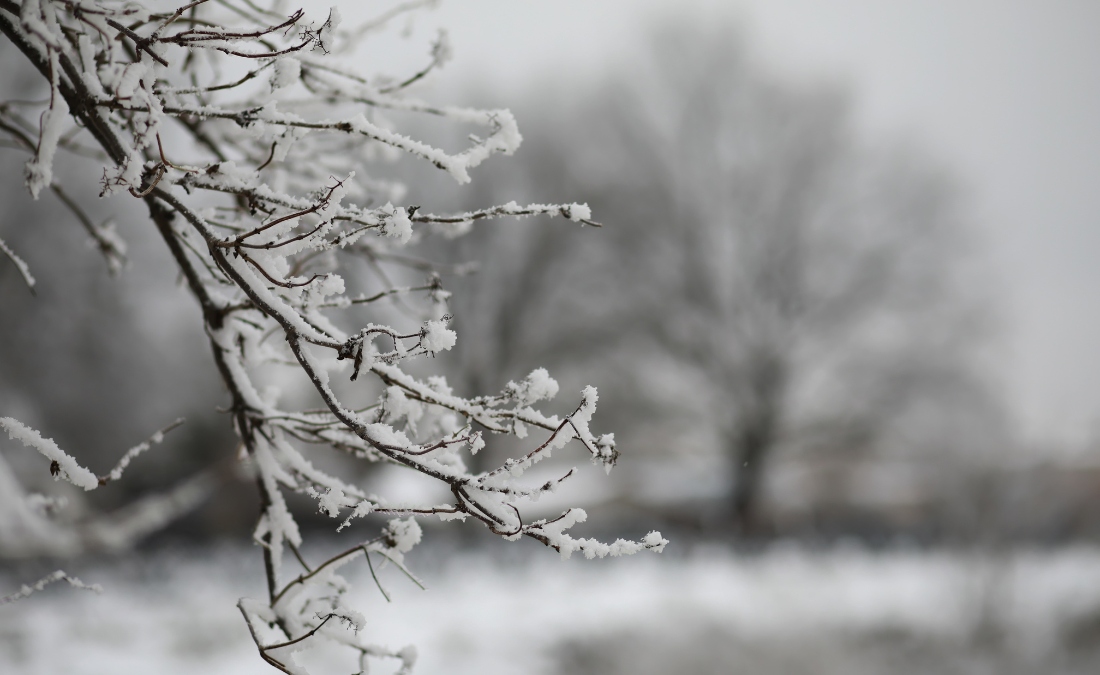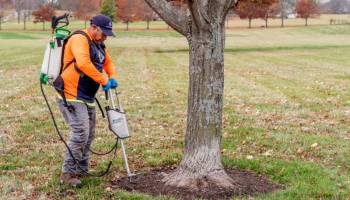6 Alternatives to Tree Removal: How To Preserve Your Kansas City Trees
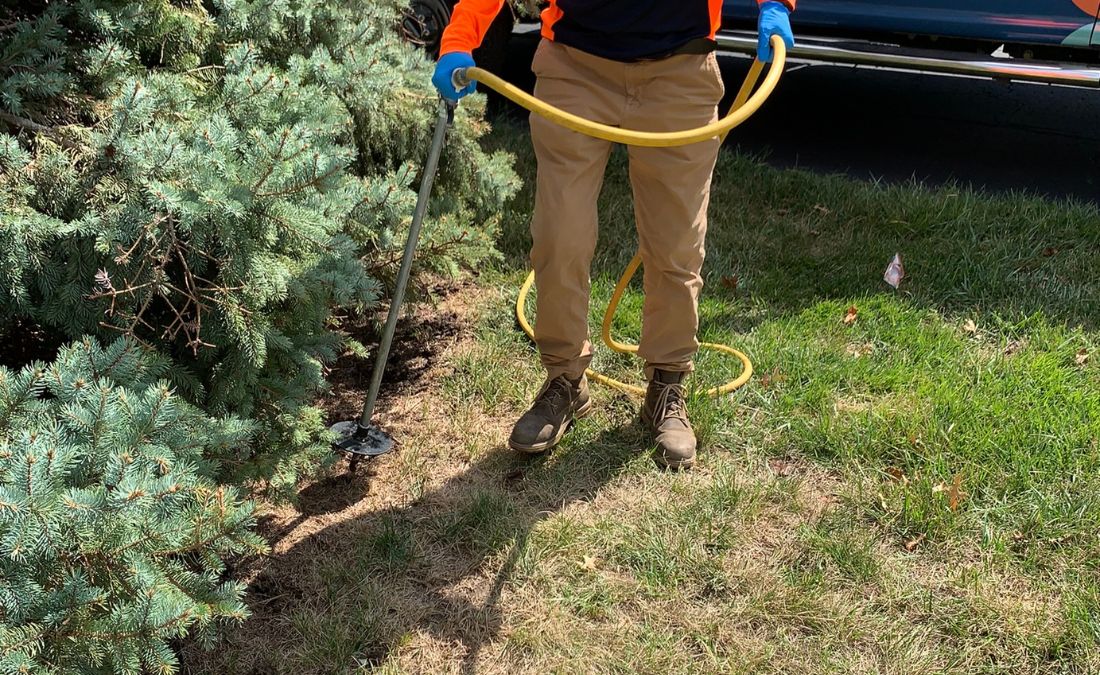
When your trees aren’t looking their best, don’t jump to removal. Arbor Masters explains typical tree preservation methods that can help save your trees.
If you’ve ever looked at an older tree on your property that isn’t looking its best anymore, you may have considered removing it. However, there are many things you can do before jumping straight to professional tree removal. Learn more about how an arborist can save a struggling tree in Northern Kansas City with tree preservation methods, such as structural support and pruning.
Key Takeaways:
- Tree removal isn’t always necessary – cabling, pruning, fertilization, soil management, watering, and pest control can often save struggling species in Northern Kansas City.
- Regular pruning and structural support systems can help mature trees withstand severe Midwest storms, a common cause of urban canopy loss in the area.
- Kansas City’s clay soil presents unique challenges for tree health, requiring careful fertilization, watering, and soil compaction management to maintain stability and nutrient uptake.
- Early intervention by Certified Arborists, especially for pest and disease issues, is crucial since many tree problems are more difficult or impossible to treat once they’ve progressed too far.
- Professional tree preservation methods are typically more cost-effective than removal while also maintaining property value and contributing to Kansas City’s urban forest goals.
6 Ways to Preserve Your Northern Kansas City Trees
While tree removal is sometimes unavoidable, there are often other options that can keep it standing and allow you to enjoy a tree’s benefits for years to come. Before doing anything, have an arborist inspect your trees and see if they recommend any of these six services before you remove them.
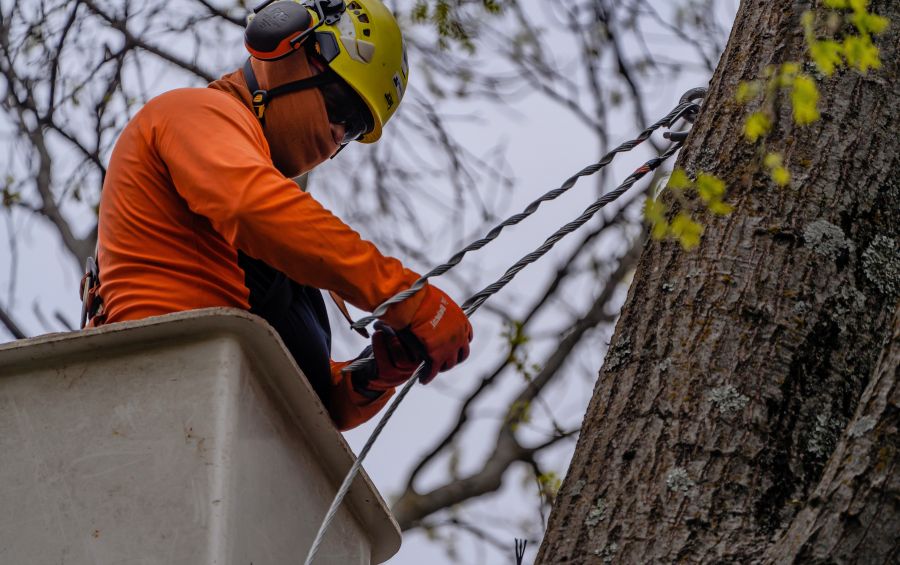
1. Install Cables and Braces to Preserve Mature Trees
Trees are similar to us in that as they get older, they become less durable. A tree’s limbs may become overextended and prone to breaking, or they may develop a bad branch union that becomes a potential point of failure. Structural support systems, like cabling and bracing, can help you keep your mature trees in one piece. In Northern Kansas City, we have several mature species to preserve, including two champion trees just outside of Highland Gardens.
While support systems can’t save every tree, they can extend their lifespan.
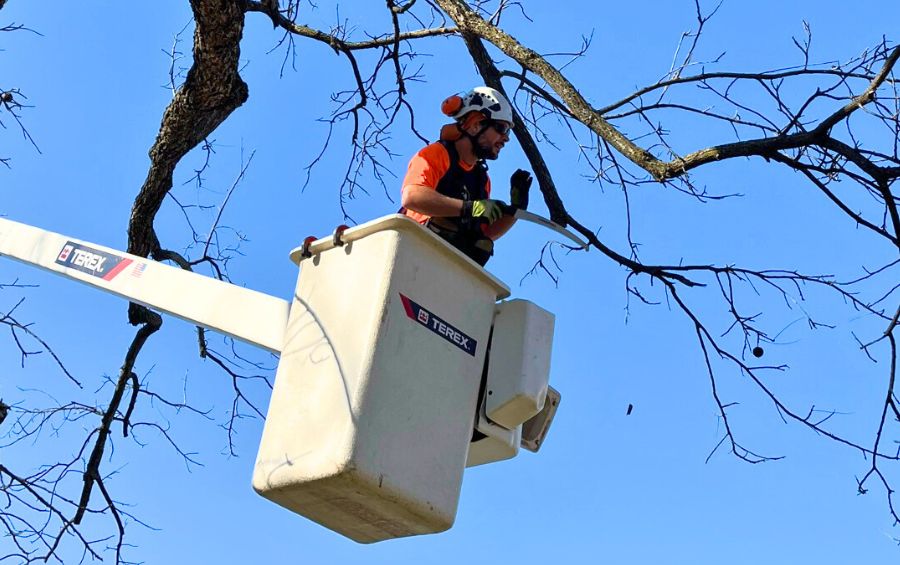
2. Prune to Reduce the Risk of Tree Failure
“A lot of people just look at pruning as something to do to make their trees look better. But it has a lot of health benefits for your trees when you do it. And one of them is reducing the risk of failure when we get hit with a major winter or summer storm.” – Jonathan Walker, Arbor Masters Arborist Advisor
Storms are one of the most common killers of trees in the Midwest. When the rain and wind pick up in a Kansas City storm, they can send branches flying and completely uproot trees. If too much of a tree ends up damaged in the extreme weather, you’ll have no choice but to remove it for safety reasons. Regular pruning improves wind resistance and reduces removal risk.
3. Provide Supplemental Water in Droughts to Reduce Stress
Droughts are an unfortunate part of living in Kansas City. This problem was even more noticeable in 2024 when the KC Metro area saw unprecedented levels of drought through October. Even when the weather is more typical, our area still frequently sees droughts and abnormally dry periods.
Supplemental water during a drought can give trees the water they need to survive. To check if they need water, dig a small hole at least two inches deep and feel the soil. If it is moist, don’t worry about supplemental water.
To water your trees, use a soaker hose or a bucket with holes in the bottom to soak the soil and get the water to the deeper roots. Just be sure to avoid overwatering, as clay soil retains moisture well and can lead to saturated soil.
If you don’t provide supplemental water to your trees during a drought, they may die and necessitate a costly removal.
4. Hire an Expert to Treat for Insects and Diseases
In the summer, your trees don’t have to just worry about dryness and storms. They also have to contend with the common insects and diseases in the Kansas City area, such as oak wilt and Japanese beetles. Protecting your trees from pests will allow you to keep them in your yard and avoid having to remove them.
Arborists offer preventive services in the spring to stop insects from invading your trees in the first place. The timing of these treatments will depend on how warm the spring temperatures are. To ensure the timing is right, consult an arborist about when to treat in the spring.
If a disease is present in your tree or an infestation has taken hold, arborists may still be able to save it. Arborists can provide reactive treatments once a disease infects your tree or insects infest it, but these may not be as effective for several reasons:
- Some diseases (like oak wilt) have no cure, and removal will be the only option.
- The damage to your tree may be too severe if the problem isn’t caught early.
- Even if you eliminate the pest, the tree will have to use energy to recover from the damage.
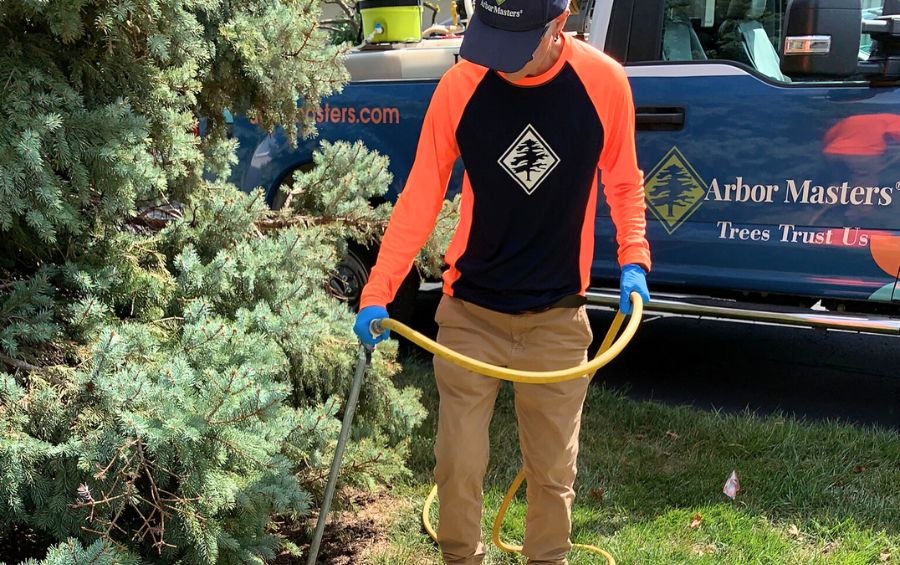
5. Fertilize the Soil to Provide Supplemental Nutrients
Not everything that harms or kills a tree is as dramatic as a storm. Sometimes, the problem is as simple as a lack of nutrients in the soil.
In forests and other natural environments, trees benefit from decaying organic matter like fallen leaves and branches that return nutrients to the soil. However, in yards and urban areas, trees won’t get that same advantage, as we tend to rake away leaves and other organic matter.
Fertilization after a soil test can help you target any nutrient deficiencies in your soil. Fall fertilization is often best, though spring can be a good time as well. Some signs your trees may need fertilization include:
- Stunted growth
- Wilted leaves
- Discolored leaves
Just because your tree looks like it’s struggling does not mean removal is the only option. Fertilization may get it back to perfect condition.
The Kansas City metropolitan area has heavy clay soil that retains nutrients better than other types. This means you must be careful when providing supplemental nutrients to avoid overfertilization.
6. Break Up Compacted Soil
While clay soil has its benefits, one of the major drawbacks of trying to maintain healthy trees in your yard is its tendency to become compacted. Compaction presents several risks for you and your trees, including:
- Limiting the root’s ability to expand and anchor the tree
- Reducing a tree’s access to water and nutrients
- Impacting stability and leading to a leaning tree
Aerating the soil with an air spade can break up compaction and reduce the potential for removal because it will allow for new root growth and improve access to water and nutrients.
Frequently Asked Questions About Tree Preservation
To help you better understand the importance of preserving trees and how we do it, we’ve compiled some of the common questions related to keeping them healthy.
Why is it essential to save trees instead of removing them?
Trees provide many advantages in urban areas like Kansas City, including keeping the temperature cooler and improving mental health. The local government is also making strides to improve our tree canopy, including promising to plant new species and limiting unnecessary removals.
Is it cheaper to save a tree than to remove it?
Yes, saving a tree is almost always a less expensive option than removal. Removing a tree often requires a sizable crew, heavy equipment, and plenty of time to do the job safely. Preservation services are much less intensive and require smaller crews to complete, leading to lower prices.
Can I protect my trees during a construction project?
Yes, there are many ways to protect your trees during construction. You can install fences around the root zone to avoid any digging that will cut roots or extensive foot traffic that will compact soil. Ensure heavy machinery doesn’t get near the tree to prevent causing damage.
What types of trees are most important to preserve rather than remove?
Some of the trees that are higher priority for preservation include:
- Native species that are beneficial to the local ecosystem
- Mature or historic trees
- Species with few disease and insect concerns
- Large trees that provide numerous advantages
Arbor Masters Can Help Keep Your Mature Trees Thriving with Tree Preservation
There are many ways to protect your trees and keep them healthy, but they typically require the assistance of an expert. An arborist can inspect your trees, determine the best methods to keep them thriving, and perform any necessary work.
The Arbor Masters of Liberty and Parkville team has the expertise and equipment to handle whatever your trees need. From cabling and bracing to providing pest treatments, we can help your tree get back to a healthy condition. Call us today at 816-781-8914 or request a quote online.
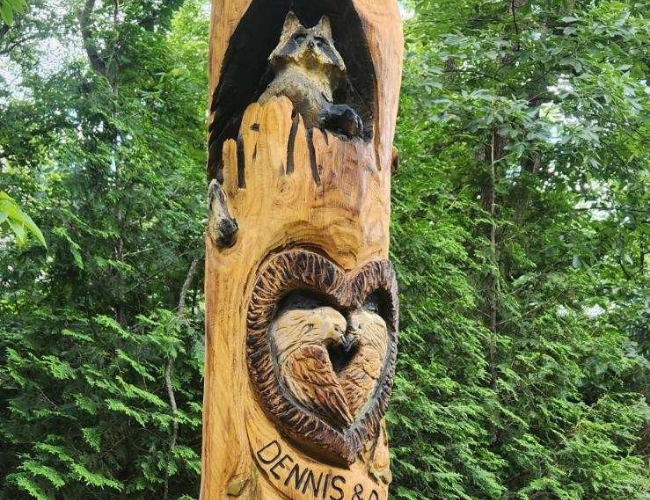
Get the latest local news, tree care tips, special offers, and company updates directly to your inbox! It's easy to subscribe and there's no spam - we promise.
"*" indicates required fields


